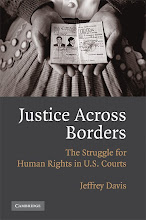The world has been facing a human rights issue that has been getting progressively worse in the turn of the 21st Century. Homosexuals are persecuted in the majority of Africa, the Middle East, and other states around the world. Western ideals of what a human right are rejected under through religion and nationalism. Barbaric means are used to legally murder homosexuals for “cleansing” of the nation. While homosexuality and expression tolerance is being progressively protected amongst wealthy and secular democratic states, the rest of the world continues to persecute homosexuals by taking their basic human rights. A voice must be given to the suppressed and it starts with us individuals. Action must be taken to represent this hidden minority and bring justice to victims of hate.
Currently, homosexuality can be punishable by death in over 40 states around the world. There are at least 79 countries where homosexuality is illegal. In Africa, 38 out of the 53 nations discriminate against homosexuality is some way. In Africa’s most populous state, Uganda, homosexuality can range between a 14-year sentence for homosexual “acts” upwards to a lifetime sentence or even a death sentence for “aggravated homosexuality.” The president of Uganda, Yoweri Museveni, signed the “Kill the Gays Bill” on February 24th, 2014 making homosexuality illegal. A few weeks after this legislation was signed, several instances of mobs entering homosexuals’ homes to viciously assault them in the name of cleansing occurred. The participants in these beatings were protected under Ugandan law. Thankfully though, the Constitutional Court of Uganda delayed the bill’s policy for death, but homosexuality itself is still illegal and punishable by the state. Also, while the bill was still in law, an undocumented amount of homosexuals were detained and tortured. Those involved in the torturing were given amnesty. These homophobic laws have existed since British colonial rule in hopes of preventing “unnatural sex.” Public opinion of Africa is overwhelming against homosexuality because of their strong desire to keep African culture as well as Christian ideals. The only nation in Africa that supports same-sex rights are South Africa and Namibia; underdeveloped states like Mali and the Congo do not have express laws against homosexuality, but all of these states have turned a blind eye to protecting the rights of homosexuals. “Curative/Corrective Rape” or the rape of lesbians by men and other hate driven crime such as vandalism, blackmail, and physical assault happens every day in these states with minimal action by police. Even though Uganda’s government does not directly murder their homosexual population, plenty of other nations still do. Any instance of a state killing its citizens is a direction violation to the right to life as stated in the Universal Declaration of Human Rights. In Yemen, married men have been sentenced to death by stoning since 1994. Married women face up to seven years in prison. The same stoning law exists in Saudi Arabia. Iran, Qatar, Somalia. Most of these states impose sharia law to sentence homosexual intercourse to death by either stoning or other methods. Flogging or imprisonment is legal for minor acts such as kissing, assembling in homosexual clubs/bars, or even for holding hands.
Changing the world starts with a change in our priorities. Protecting homosexuals from having their basic human rights stolen and their dignity ignored is critical to end the injustices committed in these countries. Rape, murder, disease, and hate continues to be embraced by governments rather than tolerance, peace, and healing. Religion must be taken out of government, especially when that religion advocates for the killing of a group of people. When those ideal trump the humanity of another human being, we as a society remain separated. Education is also important in stopping injustice. Ignorance of the unknown becomes fear, that fear becomes hate, and that hate fosters the growth of injustice. As stated above, one should not sit idly by waiting for their government to demand justice for the defenseless, that change must be demanded by each individual person who can help.

